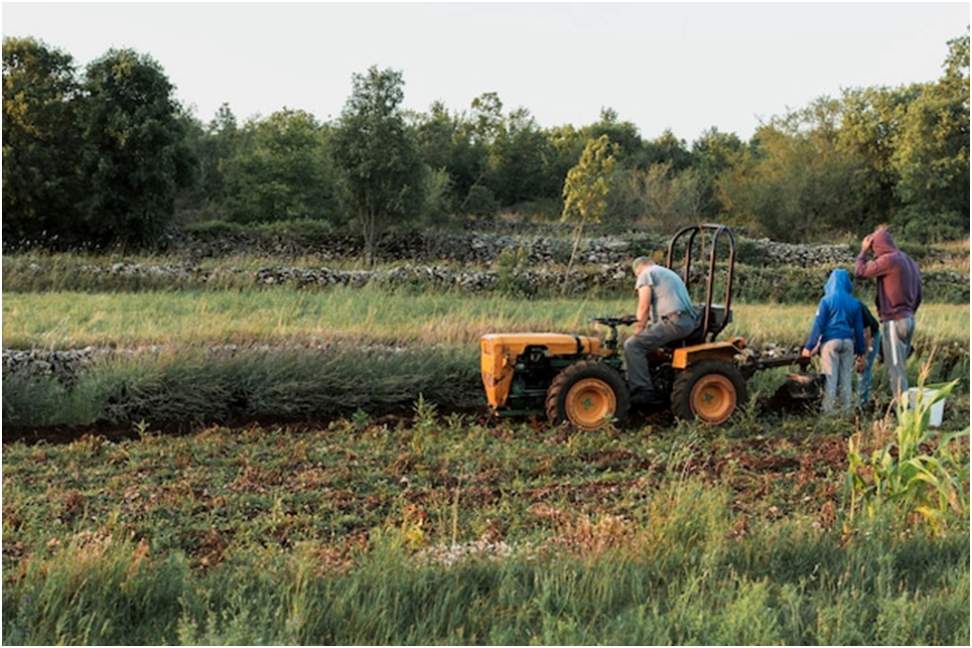Tractor bush hogging provides important land maintenance services. However, it can also pose serious dangers if proper safety precautions are not followed. This article outlines key steps to take before, during, and after bush hogging to help ensure a safe operation.
Preparation and Equipment Inspection
Before starting any bush-hogging work, preparation is key. Check that all guards and shields on the tractor and bush hog are securely in place and functioning properly. Inspect the bush hog blades for any cracks or wear and replace them if needed. Test all safety features and controls. Wear appropriate protective equipment like a hard hat, gloves, steel-toed boots, and eye protection.
Closely examine the tractor and bush hog for any issues. Check fluid levels and air pressure in the tires. Ensure all hitch connections between the tractor and bush hog are tight. Inspect the blade drive shaft for wear. Make repairs as needed before starting work. Proper maintenance prevents accidents.
Work Area Check and Surrounding Awareness
Scan the area to be bush-hogged and remove any debris or obstacles. Be on the lookout for tree stumps, rocks, or large sticks that could damage equipment or create projectiles. Fill in any holes or ditches if possible. The work area must remain clear and level.
Take note of overhead and underground utilities. Keep a safe distance from power lines, buried cables, and pipelines. Avoid areas near drop-offs, slopes, or wet conditions where the equipment could become unstable. Make others aware to stay clear while bush hogging.
Protective Gear with Tractor Window Installation
Wear appropriate protective equipment at all times during operation and maintenance. This includes a hard hat, snug-fitting gloves, and steel-toed boots, protective eyewear like safety glasses, and long sleeves and pants. Hearing protection may also be needed depending on equipment noise levels.
Consider window installation protective polycarbonate windows on equipment cabs or enclosures. Windows guard against flying debris while allowing good visibility. Look for ANSI Z87.1-rated safety glass or polycarbonate that withstands impact. Securely mount windows and maintain seals to prevent injuries.
Entanglement Risks with Accidents Response
Bush hogging throws debris in all directions, so use enclosed cab tractors or protective deflector shields if possible. Avoid coming within 20 feet of bystanders for their safety. Small children must stay indoors during bush hog operations. Wear close-fitting clothes without drawstrings or loose articles that could get caught in moving parts.
Prepare for possible emergencies by having a fully stocked first aid kit, fire extinguisher, and communication device on hand. Know basic first aid and CPR procedures. If an injury occurs, call for emergency help immediately. Report all accidents regardless of severity to prevent future hazards.
Properly maintaining equipment is key to safe and efficient operation. Inspect the bush hog and tractor daily, especially the blades and moving parts. Replace or sharpen blades regularly and adjust as needed. Check all fasteners and guards and tighten or replace them as required. Periodic maintenance keeps equipment running smoothly and prevents breakdowns when bush hogging.
Conclusion
Following basic safety precautions can help prevent serious accidents when bush hogging. Taking time for preparation, protective gear, daily inspections, and having an emergency plan in place keeps both equipment operators and bystanders safe from potential hazards. With care and awareness, tractor bush-hogging jobs can be completed productively.
Read more:
- Apmex Gold – Review, Price, History
- Larry Ellison – Biography, lifestyle, net worth
- Warren Buffett – Biography, Lifestyle, Net Worth

